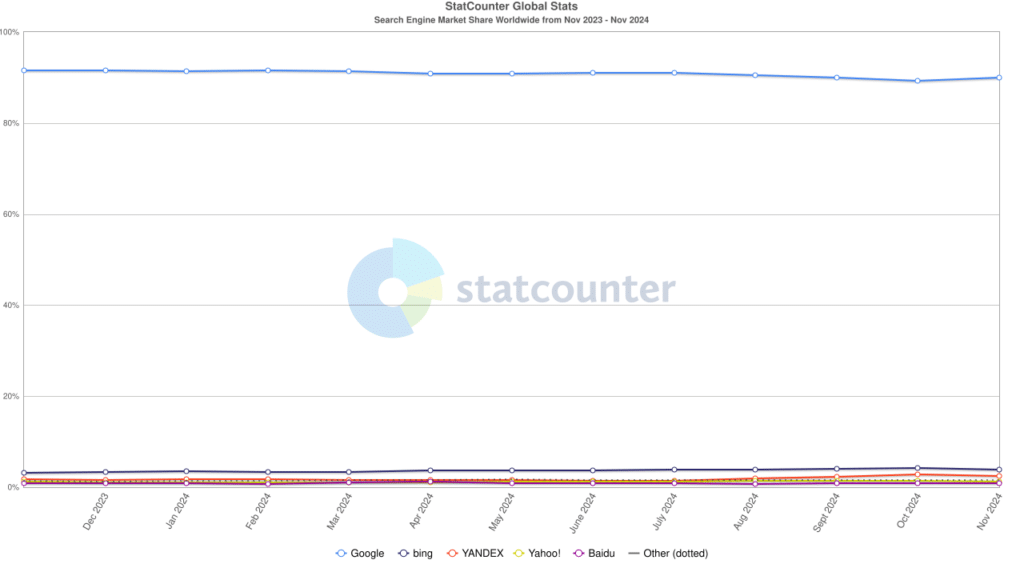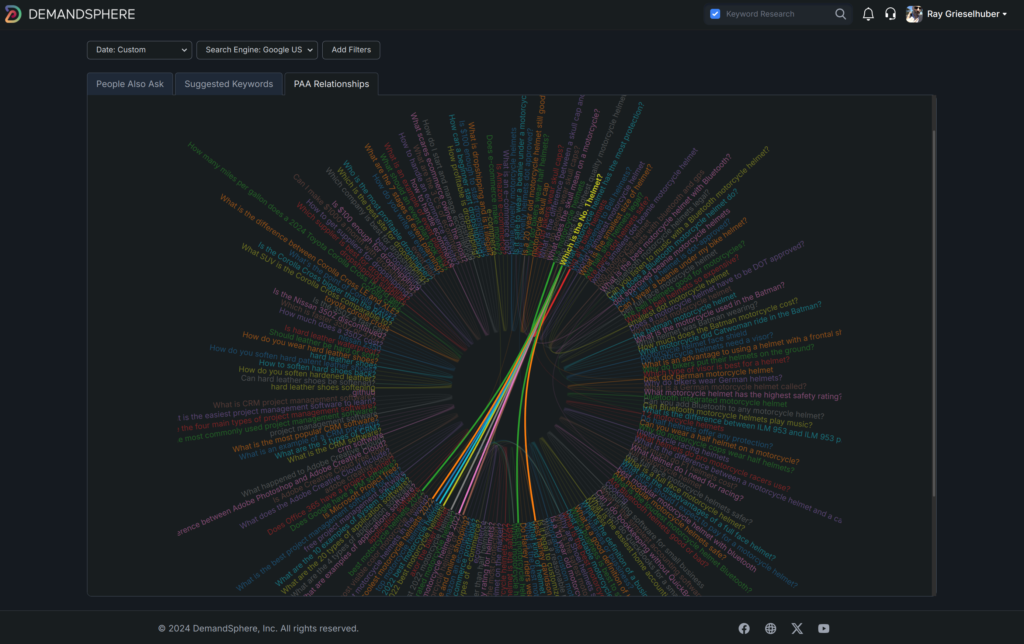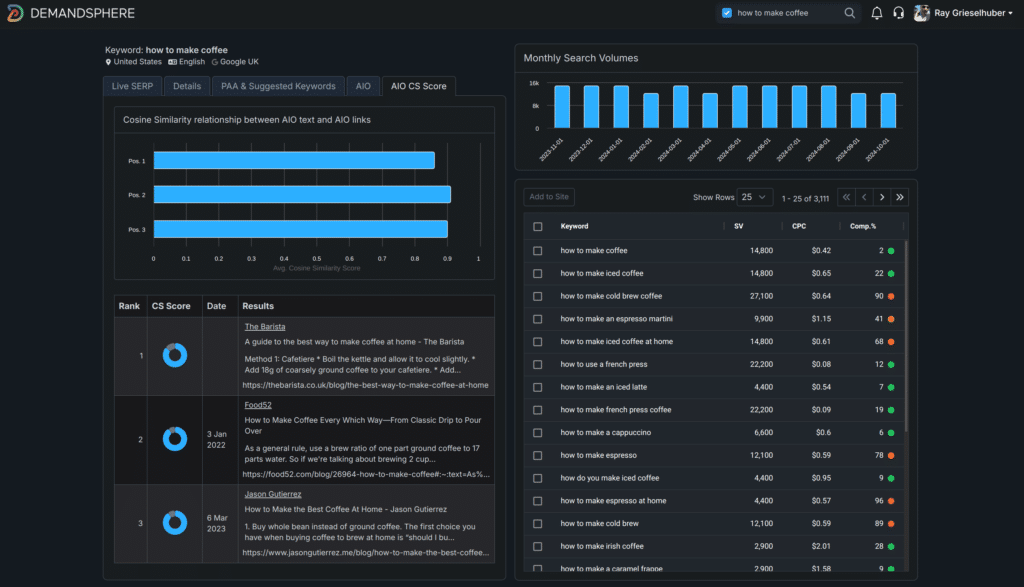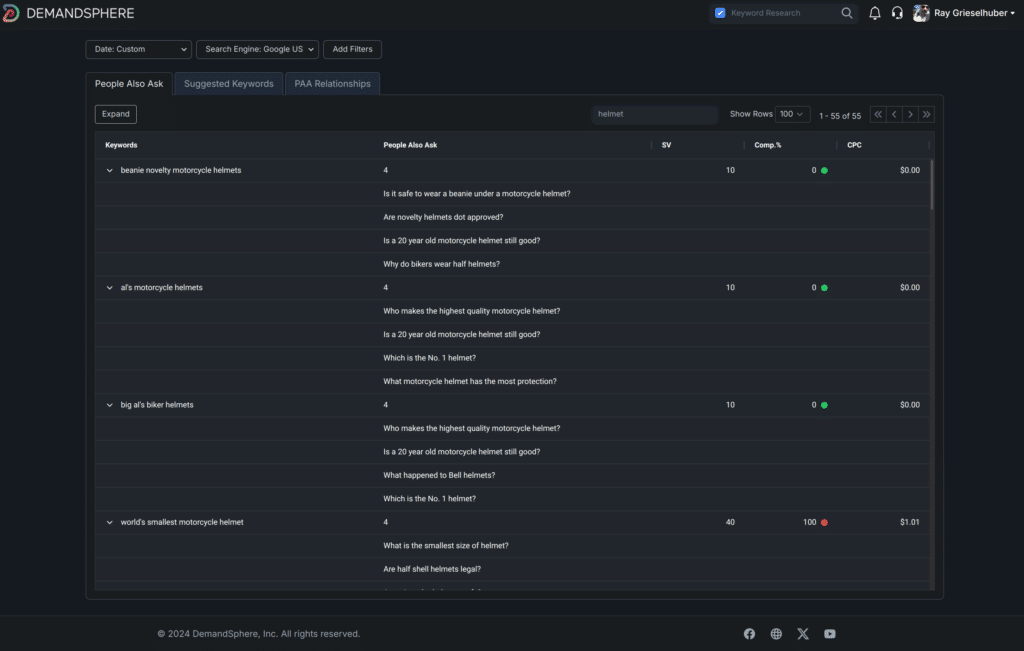We’re, understandably, getting a lot of questions about AI search strategy in 2025.
For a quick definition, AI search and AI search engines refer to the new type of search interactions that include interaction between large language models (LLMs) and, usually, traditional search engines such as Google and Bing, or other external data sources. You’ll frequently hear retrieval augmented generation (RAG) in this context. This basically just refers to the foundational models of LLMs using external sources to provide the most recent and accurate sources within their responses.
This is a new way to search and retrieve answers and it involves an additional layer of summarization and curation between the user and the underlying information retrieval systems (e.g., search engines and language models).
For search professionals, I believe it’s the best time ever to be in the industry. I’ll share a few quick thoughts here as we’re working on some new reports and data studies.
AI search traffic is exploding, although this is measured in relation to a starting point of zero.
Overall, Google still does and will continue to dominate for years in terms of overall traffic and queries.

They aren’t just going to sit out the AI race either, obviously.
That said, 2025 will be a monster year for AI search, in general.
We’re going to see real innovations as well as deeper integration into existing workflows and tools.
We’re hearing a lot of talk about how AI Optimization is the new SEO, and that LLM optimization will replace traditional search optimization.
SEOs understand, of course, that this is a false dichotomy because the dirty not-so-secret is that AI “search engines” are curating and drawing their sources from the traditional search indexes, primarily Google and Bing.
What organic search index does Perplexity.ai use? It’s hard to get clear answers on this. Let’s just say I am skeptical that they have their own index, for many reasons. I’ll be talking more about this in the future. I lean heavily toward it being Google, with some other sources mixed in.
Of course, this is for the question of general search. They are making a lot of smart moves about integrating more deeply with additional data sources and their enterprise roadmap is interesting.
All that to say, the most effective way to optimize for AI search, today, is to ensure you have good visibility in the traditional search engines. Not just in Google but also in Bing.
This also means expanding the type of queries for which you optimize. This changes the traditional search volume and click-through-rate style traffic planning.
That is still necessary but it’s very important to understand that Google and Bing’s People Also Ask, Suggested Searches, and similar SERP features are some of the most valuable and under-utilized data assets into understanding searcher behavior.

Google has a decade’s long data advantage over everybody, but this data can be mined.
As our AI Overview study with Botify showed, the primary indicators for inclusion in Google’s AI Overviews are both ranking well (positions 1-12 in our data sets) and high semantic similarity between your content and the output from Google’s foundational model used to generate the AIO summary text.

We’ve also gone deep on understanding how ChatGPT curates sources from Bing’s index. We will be providing additional research on this too but, in summary, they are curating sources based on a bias toward categorization of websites that are more informational in nature and generally shun websites with strong commercial intent. Makes sense, right?
That’s just a quick update that is scratching the surface.
Key takeaways from a data and mindset perspective
As our space evolves, there are going to be many additional sources to monitor and integrate.
The most important data to incorporate into your workflow right now is SERP data from both Google and Bing. These two sources are the underlying index for every major AI search engine on the market and the way you increase your visibility in the AI search engines is by increasing your visibility in the traditional search indexes.
Plan to expand your monitoring from commercial-heavy keywords / queries into more informational queries, as well as brand-related terms. The query length of the type of questions that AI search engines answer best are longer and more specific than traditional search engine queries.
This correlates well with the data we gathered in late 2024 in our work with Botify. The appearance of AI Overviews in Google correlated very strongly with long tail keywords, both in terms of query length and long tail search volume. Get used to working with queries that have zero search volume as reported by Google.
At the same time, understand that Google will continue to reward the big players. As Rand Fishkin pointed out in his must-read study, long tail searches make up a very small percentage of overall search demand.
Realize that Google and Bing’s People Also Asked data (and similar features) are a goldmine for understanding user behavior. This is one of the key reasons we are adding a ton of additional insights around this dataset.

2025 will be a year filled with both risk and opportunity.
The key mindset I can recommend the most is one that is willing to test things quickly, rely on the best data you can get, and be willing to hold multiple paradigms in your head at the same time, because context is everything now.
Feel free to connect with me on LinkedIn and reach out for any questions. And Happy New Year!
